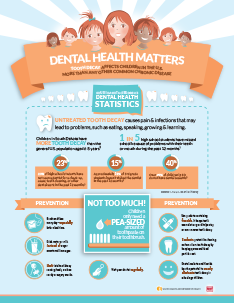Invisalign Vs. Conventional Braces: An Extensive Comparison
Invisalign Vs. Conventional Braces: An Extensive Comparison
Blog Article
Short Article By-Velling Isaksen
When confronted with the decision in between Invisalign and conventional dental braces, you may question which alternative lines up much better with your way of life and choices. The option involves greater than simply the visual appeal; it looks into factors like therapy period, comfort, and long-lasting oral wellness impacts. Consider the influence each option may have on your day-to-day regimen and positive self-image. As we explore the extensive contrast, you'll acquire insights right into the subtleties that make these orthodontic therapies distinct and uncover which one might be the better fit for you.
Materials and Building and construction
When contrasting Invisalign to conventional braces, the products and building differ significantly. Invisalign includes clear, smooth plastic aligners personalized to fit your teeth. These aligners are virtually unnoticeable, making them a popular option for those seeking a more very discreet orthodontic therapy.
On the other hand, traditional dental braces involve steel brackets that are glued to your teeth. These brackets are after that attached by cords and elastic band, using pressure to progressively shift your teeth into the preferred setting.
The building and construction of Invisalign aligners permits an extra comfy fit compared to typical dental braces. The smooth plastic product lowers irritation to your cheeks and gum tissues, which is an usual issue with metal braces and cables. Additionally, Invisalign aligners are detachable, making it simpler to clean and floss your teeth without any obstructions.
In contrast, typical braces are dealt with onto your teeth, requiring additional treatment and time for correct maintenance.
Maintenance and Oral Hygiene
The maintenance and dental health methods differ between Invisalign and traditional braces because of their one-of-a-kind style and construction.
With Invisalign, you can get rid of the aligners when eating or cleaning your teeth, enabling you to maintain your regular oral hygiene regimen without any blockages. https://www.prweb.com/releases/the_oral_surgeons_of_lane_oral_surgery_offer_gentle_tooth_extraction_in_plymouth_ma_to_remove_decay_and_boost_health/prweb17664902.htm to clean your teeth after eating before placing the aligners back on prevent food fragments from getting entraped and triggering degeneration.
On the other hand, typical dental braces call for extra focus to maintain your teeth tidy. Food fragments can quickly obtain stuck in the brackets and cables, resulting in plaque accumulation and potential tooth decay. You'll need to make use of special devices like interdental brushes or floss threaders to clean in between the wires and braces successfully.
Regular dental exams and cleansings are necessary to make sure that your dental hygiene remains in leading problem while wearing traditional braces.
Presence and Aesthetic appeal
Visibility and aesthetics play a substantial role in the comparison in between Invisalign and standard braces. When it pertains to look, Invisalign supplies a clear advantage over standard dental braces. Invisalign aligners are essentially invisible, making them a popular selection for those that prefer a more discreet orthodontic therapy option.
Unlike the obvious metal braces and wires of typical dental braces, Invisalign aligners are transparent and assimilate with your natural teeth, enabling you to grin with confidence throughout your therapy.
Conventional dental braces, on the other hand, are a lot more obvious due to their metal components. While some may go with vibrant bands to customize their braces, others could really feel uncomfortable concerning the presence of these orthodontic home appliances. The popular look of traditional braces can occasionally influence a person's self-confidence, particularly for adults in expert settings.
Final thought
In conclusion, when selecting between Invisalign and conventional dental braces, consider your lifestyle and preferences. Learn Additional uses a very discreet and comfy choice with easy maintenance, while traditional dental braces provide vivid personalization yet might impact self-esteem.
Ultimately, the choice ought to be based on what works best for you in terms of visual appeals, ease, and convenience. Make sure to consult with your orthodontist to identify the most suitable treatment for your specific requirements.
